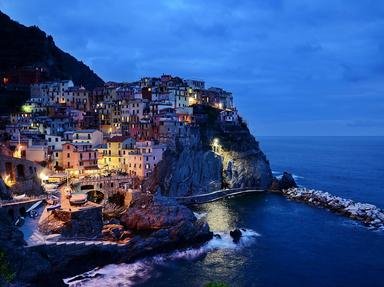Quiz Answer Key and Fun Facts
1. In which of the following cities is the Via San Gregorio Armeno, a street of nativity scene makers?
2. Which of the following ancient groups built the city of Rome?
3. Located in the north, which river is Italy's longest?
4. Although she originally went to school to become a medical doctor, Maria Montessori eventually became involved in what field of study?
5. Certainly one of the most exquisite pastries in the world, which delicacy found in Campania has a name that translates as "small, thin leaf/layer"?
6. A poet and scholar in Italy at the beginning of the Renaissance, by which of the following sobriquets is Francesco Petrarch known?
7. Many musical terms are Italian in origin. What does "andante" mean?
8. Which holy relic can be found in Turin, Italy?
9. A temple in ancient times, the Pantheon is used as a church today. It is known for its concrete dome that has an opening to the sky in its center. What is this type of opening called?
10. Leonardo Fibonacci is considered by many to be the most outstanding Western mathematician of the Middle Ages. To what did his work with numbers lead?
Source: Author
ponycargirl
This quiz was reviewed by FunTrivia editor
agony before going online.
Any errors found in FunTrivia content are routinely corrected through our feedback system.

